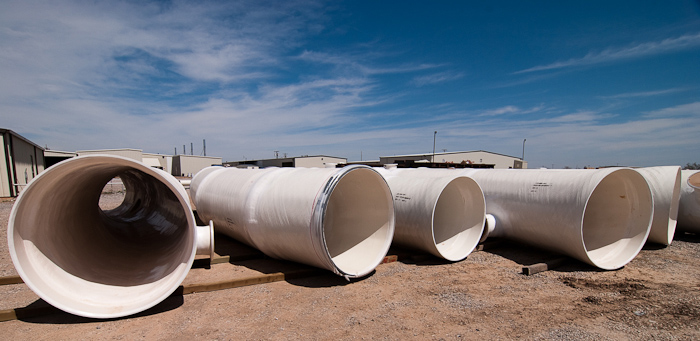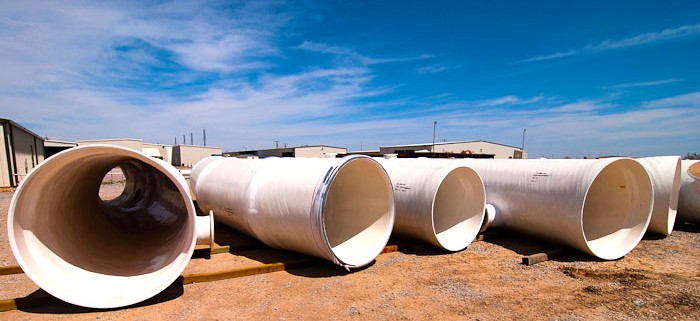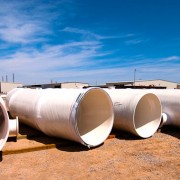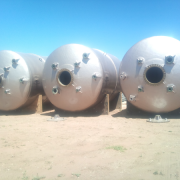FRP Corrosion Control: Education Can Improve Opportunities
 If you’ve been paying attention to fiberglass trends you’d know that corrosion, a serious problem that pits and corrodes most metals and metal alloys, has created huge market opportunities for Fiber Reinforced Polymers (FRP) including pipe, duct, and tanks. Despite the many opportunities FRP manufactures have seized over the years, some major obstacles still persist, chief among them is education—or getting the word out.
If you’ve been paying attention to fiberglass trends you’d know that corrosion, a serious problem that pits and corrodes most metals and metal alloys, has created huge market opportunities for Fiber Reinforced Polymers (FRP) including pipe, duct, and tanks. Despite the many opportunities FRP manufactures have seized over the years, some major obstacles still persist, chief among them is education—or getting the word out.
According to a 2012 article published in Composite Technologies, titled “Industrial Corrosion Control: Huge Opportunities,” lack of awareness or understanding of FRP benefits is ubiquitous among engineers. There are a handful of other agents at work which have hindered FRP gaining traction in some industries. Among them are a general unfamiliarity with FRP products; engineers are unsure of what resins or glass to select, reluctance to try a new material, thermal performance, the inability to distinguish good manufactures from bad, engineering departments at higher-education institutes, and economic paradigms.
Another commonly sighted impediment to FRP growth is new technological advancements and the uncertainties that they bring. According to a 2009 study, released by the World Corrosion Organization, one such example is evident when considering carbon sequestration technology. Specifically, regarding large-scale underground storage of carbon dioxide, (generated from power plant exhaust gases), where nearly 40 pilot sites have been proposed, 10 of which are in the U.S.
The report points out that the integrity of downhole tubing and cementing is strongly endangered by CO2 corrosion due to much more severe environmental conditions than normally encountered in traditional oil and gas production. FRP are viewed by many as a cost-effective choice in instances like this because of their known abilities to withstand stringent, corrosive environments and demonstrate long life cycles with lower maintenance costs, but it will be up to manufactures and suppliers of FRP materials to make the case for composites and help educate and assist engineers.
More research is currently underway examining the environmental conditions and stresses that the material will be exposed to. The many unknowns associated with Carbon and Capture Storage (CCS) technologies will need to be reviewed thoroughly—unknown concentrations of impurities such as oxygen, carbon monoxide (CO), and sulfur-containing gases like sulfur dioxide (SO2) or hydrogen sulfide (H2S) that are inevitably present in exhaust gases and are expected to be corrosive. FRP are seen as a potential material solution in this for piping and other construction materials under such conditions.
Geothermal power production is another example where big opportunities for FRP exist with increased education and outreach. In the geothermal industry, corrosion of plant equipment and structures within and around geothermal power generation facilities can be a major problem. Issues with corrosion primarily arise due to the presence of salts, hydrogen sulfide (H2S), and silicates in the geothermal water, which cause localized corrosion and scale formation in wells and casings and power generating equipment.
In both CCS and geothermal, technological advances have created new opportunities for FRP. Many experts within each of these industries view FRP as a potential material solution for a variety of applications, but to overcome skepticism and uncertainty, education outreach efforts will need to be increased. Economic paradigms have already begun to shift in the past five to seven years, as the price of metals have steadily rose allowing FRP to compete head to head against stainless steel and other alloys. The bottom line is that as education regarding FRP continues so will the opportunities.
For more information on our FRP and its uses, please visit us at http://www.beetlecomposites.com













